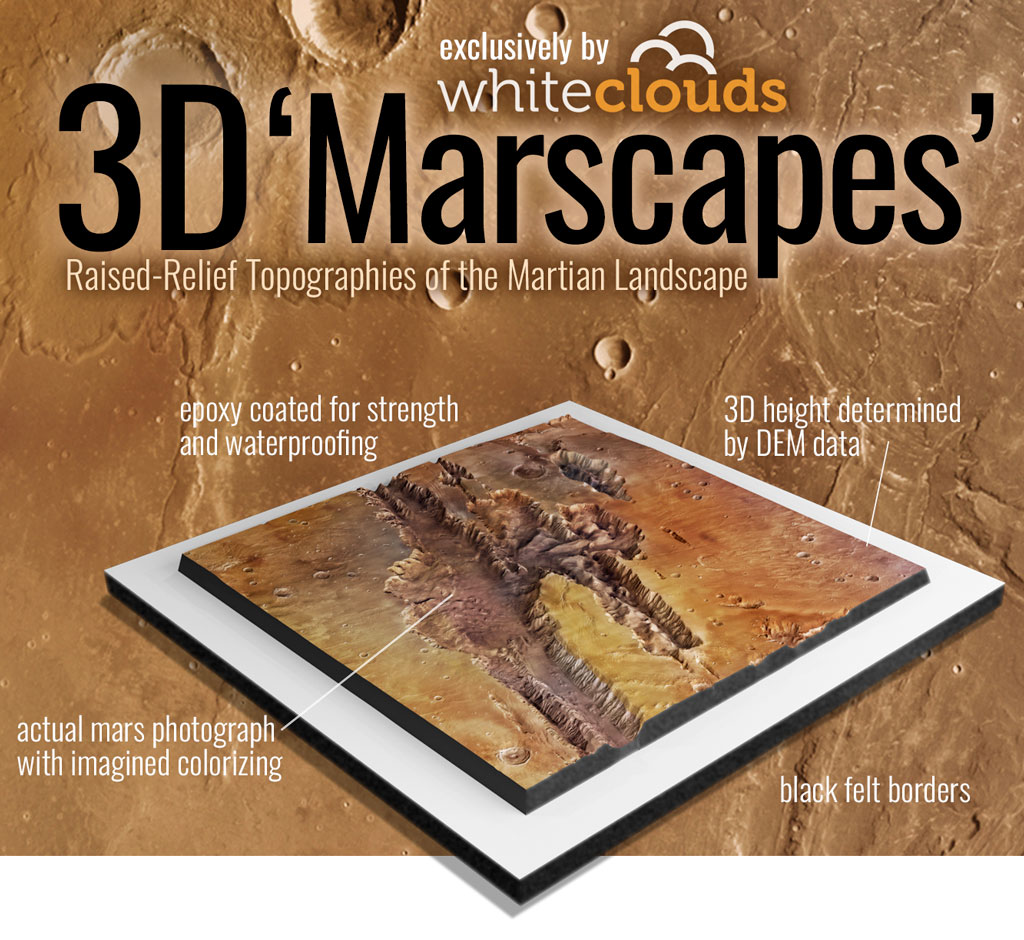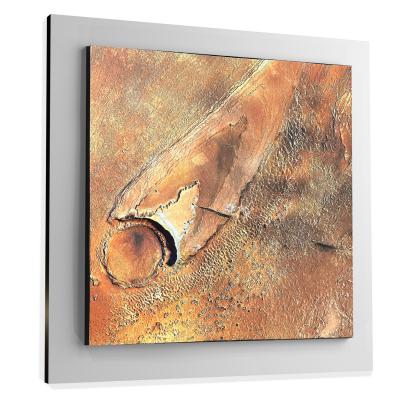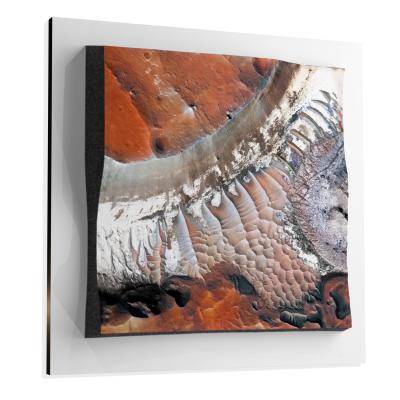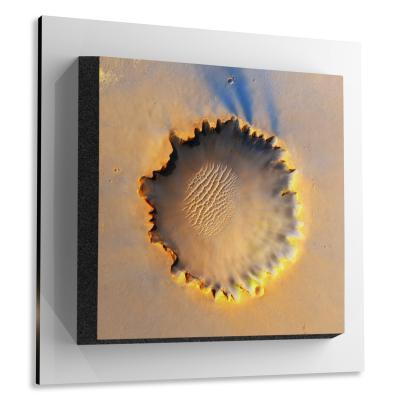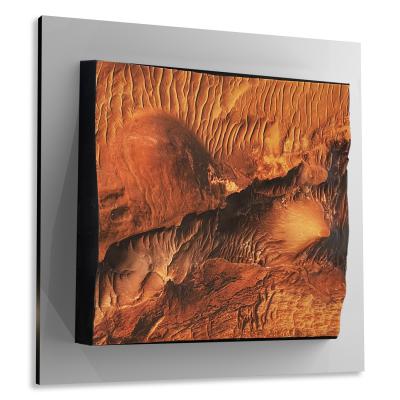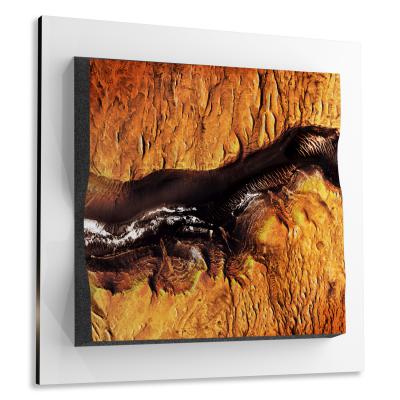Terra Cimmeria
Terra Cimmeria
We Build Custom 8K Mars Canvas Prints of Terra Cimmeria
Did you know we make
custom
8K Mars Canvas Prints

and
3D Marscapes

Terra Cimmeria
Terra Cimmeria is one of the most intriguing and enigmatic regions on Mars, occupying a significant portion of the planet’s southern highlands. It has long captured the imagination of scientists, researchers, and space enthusiasts alike due to its complex geological makeup, unique geomorphological features, and the tantalizing discoveries that have been made in the region.
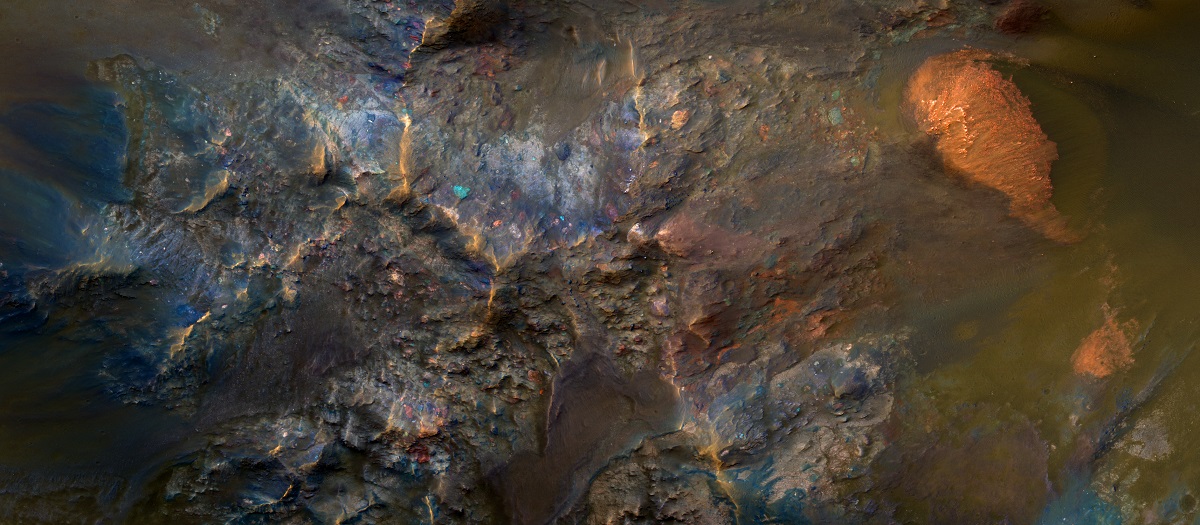 Raised Bedrock in Terra Cimmeria
Raised Bedrock in Terra Cimmeria
Geographical Location
Terra Cimmeria is a remarkably extensive region occupying a large swath of Mars’ southern hemisphere. Specifically, it extends from latitudes of approximately 30°S to 70°S and spans longitudes between 145°E and 200°E. This enormous geographical footprint covers an estimated 5.4 million square kilometers, making it not just one of the largest terrains in Mars’ southern highlands, but also a significant geographical entity in its own right. Its location places it adjacent to several other regions of considerable interest: Terra Sirenum borders it to the west, the massive Hellas Planitia impact basin lies to the east, and it stretches toward the South Polar regions. Further north, it is situated below the equatorial volcanic expanses of Elysium Planitia and the Tharsis volcanic plateau. This positioning places Terra Cimmeria at the intersection of different Martian geological themes—from ancient terrains to more recent volcanic activities—making it an invaluable subject for understanding Mars’ complex geology and climatology. Its expansive size also means that Terra Cimmeria hosts a plethora of landforms, mineralogical variations, and other geological phenomena, rendering it a cornerstone for Martian scientific exploration.
Advertisement
Sample Marscapes
Geological Composition
The geological composition of Terra Cimmeria is a veritable cornucopia of clues that can shed light on the Red Planet’s intricate and often enigmatic geological history. The crust of this region is primarily made up of basaltic rocks and is astoundingly ancient, with age estimates suggesting that it dates back to the Noachian period—somewhere between 3.5 to 4 billion years ago. Spectrometric analyses from orbiting spacecraft have unraveled a complex mineralogical portfolio, including deposits of sulfates, various clays, and hematite. The presence of sulfates strongly suggests a history of acidic, water-rich environments, while clays indicate the possibility of past conditions with neutral pH levels, conditions that could conceivably have supported microbial life forms. Hematite, often associated with the presence of standing water, adds another layer of intrigue, suggesting that Mars may have had more temperate, water-bearing periods. Each of these mineral types implicates a variety of geological processes that Terra Cimmeria has undergone. These processes range from volcanic eruptions and ancient impact events to sedimentary deposition, enriching our understanding of Martian history manifold.
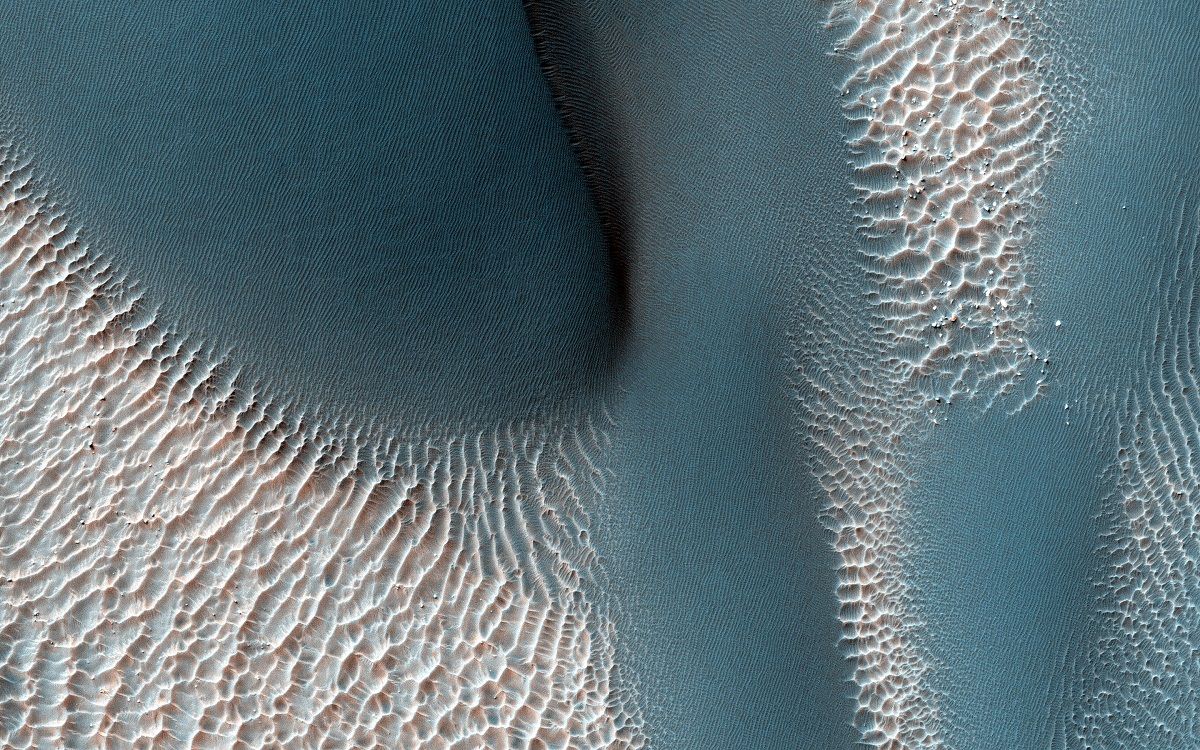 Crater in Southern Terra Cimmeria
Crater in Southern Terra Cimmeria
Significant Discoveries
Ancient River Channels
High-resolution orbital imagery has unveiled one of Terra Cimmeria’s most stunning revelations: the unmistakable features of ancient river channels. These fluvial characteristics point toward a history of water flow, drastically elevating the area’s potential as a host for past Martian life forms.
Icy Deposits
Ground-penetrating radar data from orbiting spacecraft have given us yet another revolutionary discovery: subsurface ice deposits. These deposits could be monumental in understanding Mars’ past and present hydrological cycle and could offer critical resources for future manned missions to Mars.
Magnetic Anomalies
Magnetic anomalies, detected by orbiting instruments, provide a rare glimpse into Mars’ past magnetosphere. This offers invaluable insights into the planet’s early atmospheric conditions and, by extension, its capability to sustain liquid water on its surface.
Scientific Missions
Mars Reconnaissance Orbiter (MRO)
The Mars Reconnaissance Orbiter has been instrumental in our exploration of Terra Cimmeria. With its state-of-the-art imaging systems and spectrometry instruments, MRO has mapped out features suggestive of ancient rivers and intricate mineral compositions that add valuable dimensions to our understanding of this fascinating region.
Mars Express
The Mars Express mission, operated by the European Space Agency, has been another linchpin in our study of Terra Cimmeria. Its radar systems have identified subsurface ice deposits, and its spectroscopic instruments have generated vital data for the mineralogical mapping of the region.
Future Missions
Due to its compelling geological features and its seminal role in the evolutionary timeline of Mars, Terra Cimmeria continues to be a high-priority target for future missions. It is actively being considered for rover deployments, sample return missions, and potentially even human exploration, all of which aim to unravel the region’s mysteries in even greater detail.
Geomorphological Features
Terra Cimmeria is a sprawling tableau of geomorphological diversity. The landscape is punctuated by impact craters of various sizes and levels of erosion, indicating a history of cosmic impacts over eons. The region is also rife with valley systems that appear to be the products of ancient fluvial activity. Additionally, the terrain features basaltic plains interspersed with imposing mountain ranges and showcases evidence of tectonic activity, such as rift valleys and fault lines. Intriguingly, Terra Cimmeria also includes regions of knobbed terrains—mysterious, lumped formations—as well as brighter patches that may possibly be composed of icy material. Collectively, these geomorphological aspects make Terra Cimmeria a unique Martian laboratory, providing boundless opportunities for scientists to study and understand the geological and climatic evolution of the Red Planet.
Terra Cimmeria is a region of outstanding interest on the Martian landscape. Its unique geographical location, intricate geological composition, and the plethora of significant discoveries made there establish it as a critical area for ongoing and future scientific investigation. As technology advances and we continue to send more specialized missions to Mars, Terra Cimmeria is likely to remain at the forefront of our quest to understand the Red Planet’s geological history, climatic shifts, and potential to have hosted life.
Check out our 3D Mars Learning Center for more information on Mars and Terra Cimmeria. You can also learn more at: NASA Mars Exploration.
More About Mars
Contact us today to learn more about our 3D services and how we can help you achieve your goals.
